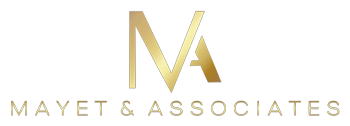In today’s digitally driven workplaces, emojis have become a staple in day-to-day communication. From quick reactions on messaging platforms to casual acknowledgments in emails, these small icons are often used to add tone, emotion, or brevity. However, what may seem like a harmless smiley face or thumbs-up can lead to serious misunderstandings and in some cases, legal and disciplinary consequences.
The Double-Edged Nature of Emojis
Emojis are often used to convey tone or intent in text-based communication. But the meaning of an emoji can shift depending on context, platform, culture, or the relationship between sender and recipient. For example:
- A wink emoji might be seen as light-hearted by one person, but inappropriate or flirtatious by another.
- A fire emoji could imply excellence or enthusiasm but in the wrong setting, it might be considered suggestive or unprofessional.
These variances in interpretation mean that emojis are not as neutral or universal as they appear. In professional environments, where tone and intent are crucial, miscommunication can quickly escalate into formal complaints or legal disputes.
When Emojis Create Legal Exposure
The use of emojis in the workplace is not merely a social or stylistic concern. It has legal implications. Digital communications, including emojis, are now commonly referenced in disciplinary hearings, grievance procedures, and even court cases. Misused emojis can support claims of:
- Workplace harassment;
- Creation of a hostile work environment;
- Breach of communication policies or codes of conduct;
- Reputational damage to the employer.
Without clear guidelines or training, employees may inadvertently engage in conduct that breaches company policies or employment legislation.
Policy Considerations for Employers
To manage this emerging risk, employers should take proactive steps to ensure their workplace policies reflect modern communication practices:
- Include Emojis in Communication Guidelines
Update internal communication and IT policies to address the use of emojis. Define acceptable and unacceptable contexts, particularly in formal communications. - Train Staff Across All Levels
Educate employees on how emoji use may be interpreted differently across cultures, age groups, and professional hierarchies. Sensitisation helps reduce the likelihood of miscommunication. - Establish Context-Sensitive Boundaries
While emojis may be appropriate in internal team chats, they may not be suitable in communications with clients, during disciplinary processes, or in performance evaluations. - Recognise Emojis as Evidence
Ensure that managers and HR are trained to consider emojis as part of any investigation into misconduct or inappropriate communication. Emojis can carry evidentiary weight when assessing the tone or intent of a message. - Avoid Blanket Bans
A complete prohibition may be impractical and could alienate younger employees. Instead, adopt a nuanced approach that promotes awareness and professionalism.
Legal Risk Management in the Digital Age
In the event of a dispute, the interpretation of an emoji is rarely straightforward. Its meaning may depend on a sequence of messages, the nature of the conversation, and how it was received by the parties involved. Courts and disciplinary panels are increasingly willing to consider these factors, making it essential for employers to adopt a measured, informed approach to digital communication management.
Conclusion
Emojis are not inherently inappropriate, but they are not inherently harmless either. As they become embedded in professional communication, their legal and reputational significance cannot be ignored. Employers must ensure their policies, training, and internal culture are equipped to deal with this modern form of expression.
At Mayet & Associates, we support businesses in developing clear and effective workplace policies that address evolving communication norms. Contact our Employment Law team for guidance on implementing best practices that balance inclusivity, clarity, and compliance in today’s digital workplace.






